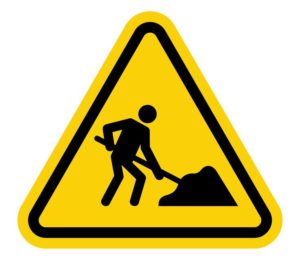By Dr. Ken Broda Bahm: 
Canada has an odd system for determining juror bias in some cases. Referred to as a “trier’s process,” it involves the section of two jurors, who do not otherwise go on to become jurors in the case, but are instead charged with determining if the grounds for a challenge for cause of another panelist is valid or not. While I have heard of similar steps tried experimentally in our courts, the idea of jurors judging other potential jurors remains very unusual to those of us in the United States. But we may be able to take a lesson from it. A recent article in a publication “The Conversation” is written by McMaster University professor Ameil Joseph, a critical race scholar who served in the role as a “trier” in a jury selection that involved issues of race.
The case was a second degree murder trial in Ontario arising from a shooting and killing of an unarmed man as he was allegedly breaking into a truck in the accused’s driveway. The issue of race came up because the Defendant was white and the deceased was a member of the Six Nations tribes. When professor Joseph was asked to assess the others on the panel for potential racial bias, that assessment was based on one question: “Would your ability to judge the evidence in this case without bias, prejudice or partiality, be affected by the fact that the deceased victim is an indigenous person and the person charged with this crime is a white person?” While the process was viewed in the media as being better than other cases that did not address racism at all, the trier in this case writes that it seemed quite insufficient. “The question,” he writes, “implies that acknowledging people’s social identities, and recognizing the relations that exist between social groups, is a form of contamination or bias.” Ultimately, basing the process on one question about the potential juror’s perception of their own bias is a symbolic rather than substantive way of addressing the real complexity of attitudes and experiences having to do with race. The lesson for our system is that we may be guilty of that as well, and can do better.
Minimalism Is a Mistake
One problem with the process described in professor Joseph’s essay is minimalism: The court seems to assume that the less attention to race, the better. It allowed one question in voir dire, and then excluded mentions of race during the shooting. That minimizes the discovery of bias, not the impact of it. More broadly, it is a form of erasing rather than accounting for racial bias. Joseph argues that the single-question focus along with other statements by the court, “Sent a message to the people in the court that identities should not be spoken of, nor be considered.” That denies what may be the actual realities of the interaction. In the criminal case, he writes, “What it in fact produced was a mostly male, mostly white jury who was told to deny race and racism as a fact of the case and systemically eliminate these contexts from factual analysis.
Self-Diagnosis Is Not the Cure
At the heart of the question, of course, is the standard ingredient of self-diagnosis that is familiar in American voir dire, especially in the questions asked by the court. Potential jurors are expected, before they’ve heard the case, to know their own ability to judge the evidence and their own biases and prejudices. As common as these questions are, they are also based on very little when it comes to human psychology. As I have written previously, the research is clear there is no reliable relationship between saying, “I can be fair” and actually being fair. And the reason for that is that a bias generally isn’t a conscious decision: People don’t just decide to rest on prejudice rather than reason. Instead, the bias is part of their outlook and their perception. Even, or perhaps especially, when a person has an extraordinary bias, they generally believe they’re being completely fair and reasonable.
Awareness of Potential Bias Should Not Be Disqualifying
In addition to being based on conscious awareness, the process also equates that awareness with bias. As Joseph writes, “the process disallows (or at least strongly discourages) jurors who recognize the realities and facts of racism.” Taking the question above, a question that is framed in the same manner as many questions aimed at uncovering bias, the person who says, “Yes, it probably would influence the way I see it,” is probably being honest, while the person who says, “No, I wouldn’t be affected at all by that,” probably isn’t. The person who is blind to a powerful bias should not be qualified for service for that reason, and the person who is sensitive to the fact that many things could influence their perception and judgment shouldn’t be disqualified for that reason alone. Rather, the second level that needs to be explored is the potential juror’s motivation to recognize that they have a certain attitude or experience and then to guard against these factors determining a verdict. Sometimes that can’t be done (and that’s why we have cause challenges and strikes), and sometimes it can. Advocates, judges, and in Canada, “triers” will have a better shot at dealing with bias if it is explored and not just buried with one simplistic question.
Other Posts on Jury Selection:
- Avoid Juror Self-Sabotage
- Use Community Attitude Surveys as an Uncertainty Reduction Strategy
- Sunshine: Support Open Records as One Part of the Answer to Discriminatory Jury Selection